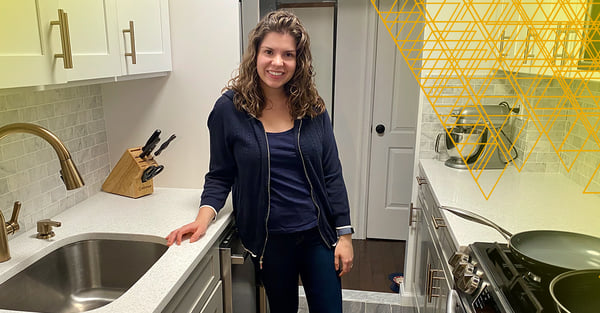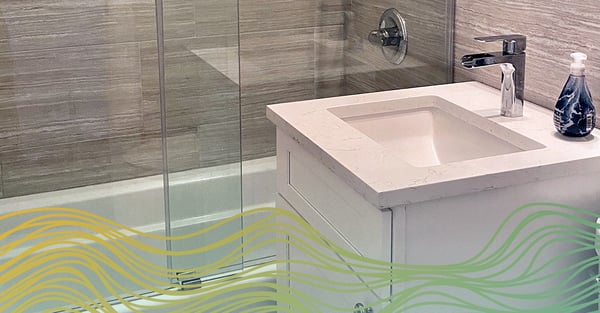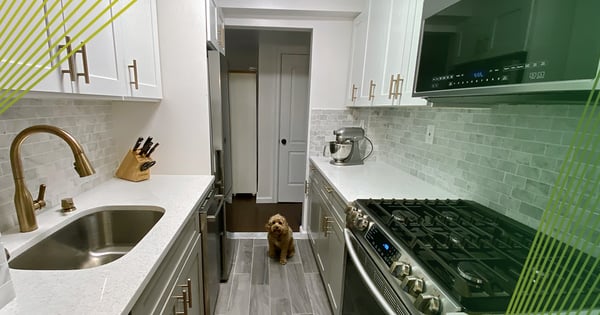Anyone who has searched for real estate in the past few months can attest that the market is hot, particularly in suburbs of major or mid-sized cities. According to The New York Times, July brought a 44 percent YoY increase in home sales within the suburban counties surrounding the city. This increase reached 112 percent in Westchester and 73 percent in Fairfield County, CT.
It’s not surprising that we’re seeing an exodus to the suburbs given the longer-than-anticipated quarantine. The trend isn’t only reserved for people buying full-time residences, either. Many are scooping up properties as second homes now that working remotely has become the norm.
With the buying boom comes a parallel spike in demand for remodeling. Online home remodeling platform Houzz reported a 58% annual increase in project leads for home professionals in June. Mary L. Cifuentes of Ferguson Showrooms noted skyrocketing demand for cooking ranges, refrigerators and freezers, as well as an increased interest in touchless appliances. The stock price of swimming pool distributor Poolcorp has spiked by over 54% this year (as of August 2020), with other outdoor retailers seeing booms as well.
The benefits of this influx in indoor and outdoor remodeling are shared among DIYers, contractors and an emerging group: remote remodelers.

Brittany Erskine, Senior Account Executive at G&S, was just beginning to renovate her Manhattan apartment when COVID-19 sent her and her husband to East Long Island and later New Jersey to reside with their parents for more space. This meant managing the entire remodeling process virtually – a feat that is not for the faint of heart.
Erskine is just one example of a homeowner-turned-remote remodeler due to the pandemic. As virtual showings pave the way to long-distance closings, more people are choosing to make the necessary renovations to their homes while living miles away. The trend shines a spotlight on the need to surprise, delight and communicate with customers from afar, demanding a delicate balance of digital, personal and delivery experience.
We asked Erskine and other recent home buyers and remodelers about what worked, what didn’t, and what they felt could improve about the process of remodeling remotely. Here are the top four tips that emerged.

Be vigilant with your updates. The pandemic has massively disrupted the supply chain, with products on backorder for months on end. This means you must pay even more attention to communication, ensuring that your customer knows where their products are at every step of the process. Chat bots, automated emails and texts are all digital communications tools worth investing in as part of your tech stack to keep your customers informed about product updates, delays and delivery schedules.
Offer white glove service both in-store and online. Social distancing shouldn’t preclude your customers from feeling like they are getting the best service possible. Find ways to get creative with your face-to-face meetings. Ferguson is emphasizing showroom appointments along with virtual consultations to provide a richer customer service experience when in-person isn’t possible. If there is anything we have learned from this pandemic, it’s that people crave human interaction – whether spaced a diligent six feet apart or conducted in a virtual meeting room.

Supplement showrooms with swatches and samples. Despite varying levels of customer comfort with visiting stores and showrooms, one thing hasn’t changed: They still want to touch and feel the products they are installing in their homes. The same goes for furniture fabric swatches. Erskine was smitten with her experience at The Shade Store throughout the entire remote remodeling process. “Ideally, I would have been able to sample everything together – wood, countertops and paint swatches,” she said. “I felt much more comfortable and connected to the home retailers who sent me samples.” Quartz samples from Caesarstone made her countertop decision easier, she said, because she was able not only to see what it looked like in her home but also get a feel for the material before investing in the high-touch home fixture.

Invest in clear, high-resolution visuals of the products you offer. With the shopping process becoming increasingly virtual, photography goes a long way. Include shots with multiple angles to most closely mimic the in-person experience of examining a product from all angles. When delivering samples is not an option, allow your customers to “bring home” the product in reverse by investing in AR tools that allow them to visualize the products virtually in the surroundings of their own home.
Against the backdrop of a pandemic, our living, buying and socializing activities have shifted drastically, and emerging markets are finding creative ways to keep pace with the changes. We are only beginning to see what customer behaviors and expectations will be forever transformed, but one thing remains certain: Customer attention will always reign supreme.
Reshaping the Future is our take on what’s next and how we can inspire action and succeed in the “new normal” together. Click here to see our full report, along with fresh data and insights. We’ll help you lead through the future, uncertain as it remains.